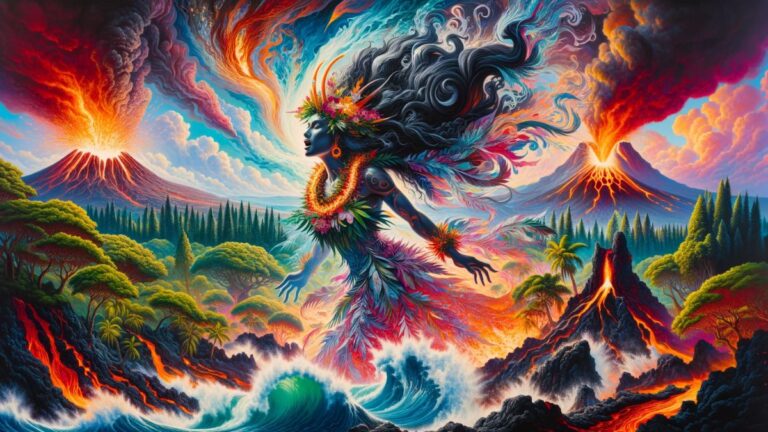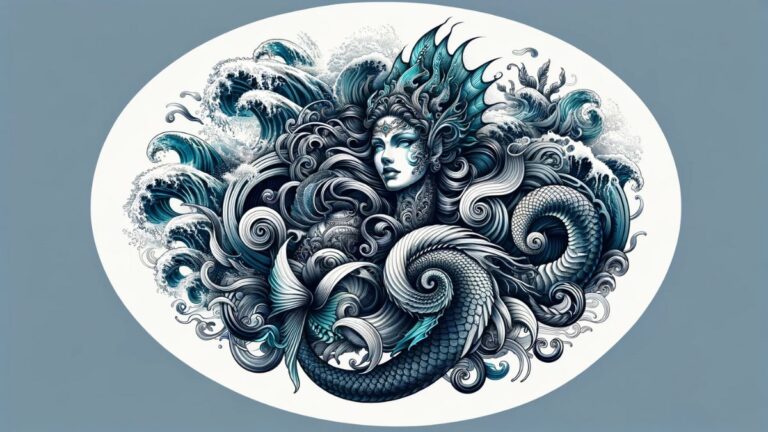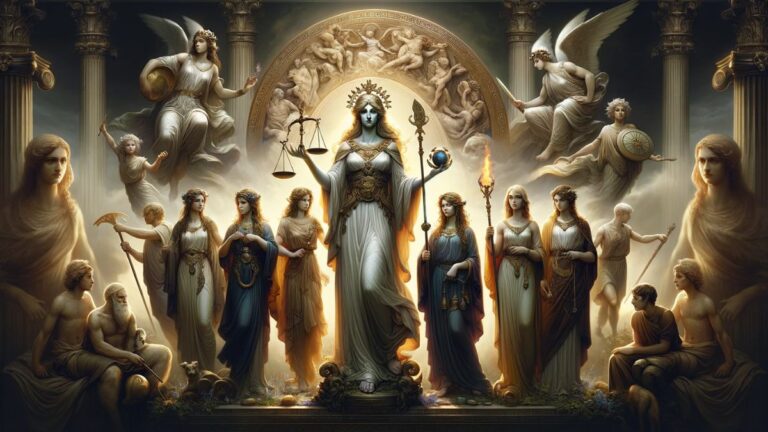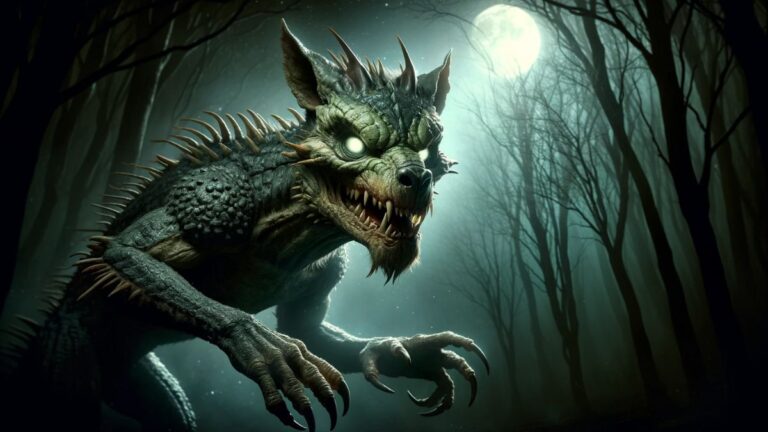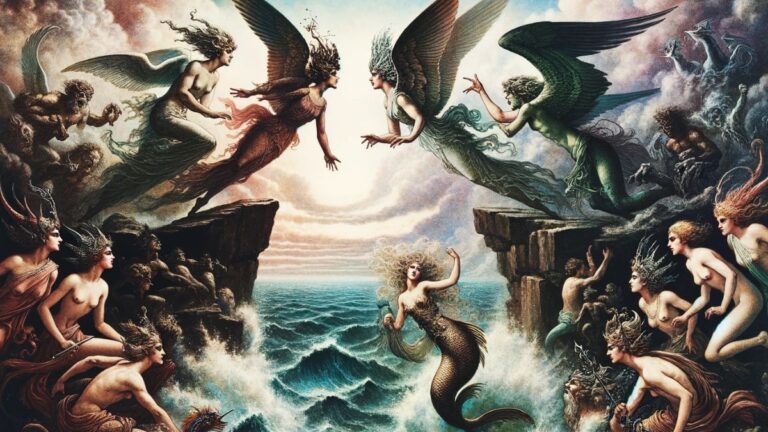50 Enchanting Facts About Unicorns: The Magic Behind the Myth
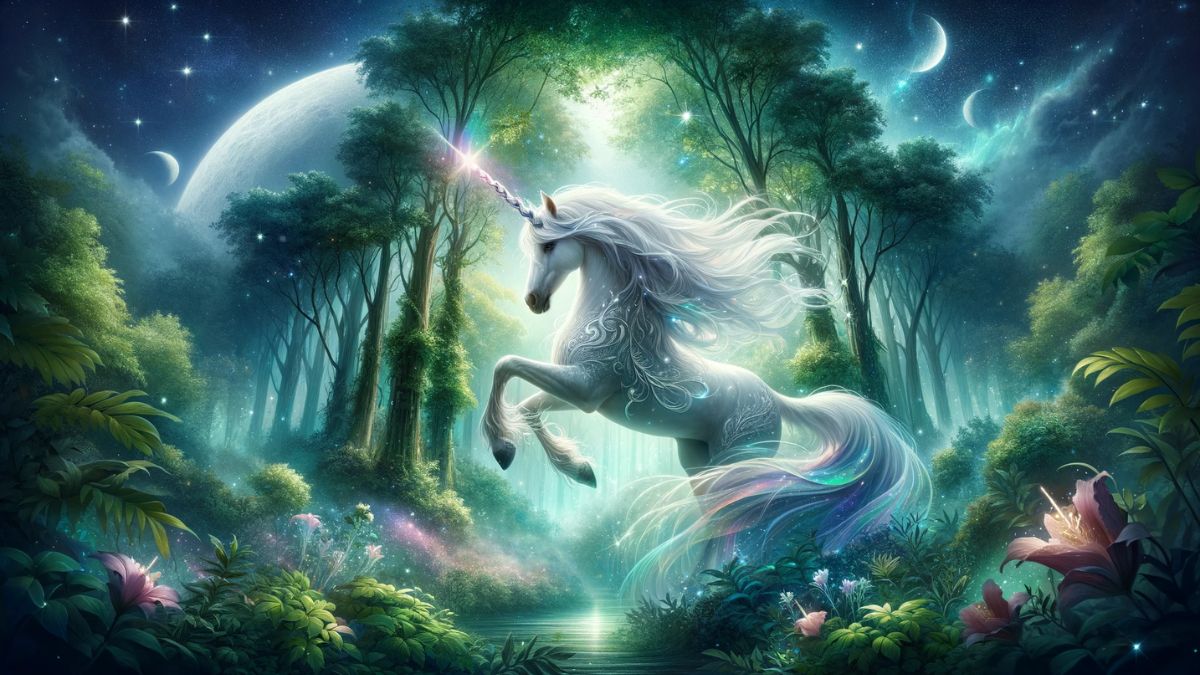
Unicorns have captivated the human imagination for centuries, enchanting us with their mystical beauty and allure. In our article, “50 Enchanting Facts About Unicorns: The Magic Behind the Myth,” we delve into the fascinating world of these mythical creatures. From their ancient origins to their symbolic significance in various cultures, we explore the myriad ways unicorns have been revered and represented throughout history. Join us on a magical journey as we uncover the secrets and stories behind these beloved mythical beings, revealing why they continue to charm and inspire us even today.
1. Origins of the Myth
The unicorn myth is deeply rooted in history, with its origins tracing back to ancient civilizations like the Greeks and Romans. These early accounts didn’t describe a horse-like creature, but rather a wild beast, often based on real animals such as the Indian rhinoceros. Over time, these descriptions evolved, blending with local folklore and symbolic interpretations to create the magical, horse-like unicorn familiar to us today.
2. Symbol of Purity
Throughout various cultures, unicorns have been revered as symbols of purity and grace. This perception stems from a belief in their magical powers, particularly related to purification. There was a widespread belief in medieval times that a unicorn’s horn had the power to purify water and cure diseases, reflecting the creature’s association with purity and healing.
3. The Horn’s Magic
The unicorn’s horn, known as an alicorn, was said to possess remarkable magical properties. In medieval lore, it was highly valued for its supposed ability to neutralize poisons, cure diseases, and offer protection against evil spirits. This made the mythical alicorn a coveted item in that era, with many claiming to possess it, though it never truly existed.
4. Renaissance Art
In Renaissance art, unicorns are a frequent motif, symbolizing concepts like chastity and purity. They were often depicted in the company of virgins, highlighting the belief that unicorns could only be tamed by someone pure of heart. This artistic theme illustrates the deep cultural and symbolic significance of unicorns during this period.
5. Literary Appearances
Unicorns have captivated authors and audiences alike, appearing in literature from medieval bestiaries to contemporary fantasy novels. Their mystical nature and symbolic meanings make them a versatile and enduring element in stories, representing everything from innocence and purity to strength and otherworldliness.
6. Coat of Arms
In heraldry, unicorns hold a place of honor, often featured on coats of arms and flags. They symbolize qualities like strength, purity, and power. Their use in Scottish and British heraldry is particularly notable, emphasizing the unicorn’s enduring symbolic significance across different cultures and times.
7. Cultural Variations
Unicorns are imagined differently across various cultures. In the Western tradition, they are typically depicted as horse-like creatures with a single horn. However, in other cultures, such as in China, unicorns (known as Qilin) take on a more dragon-like appearance, reflecting the diverse ways in which the unicorn myth has been interpreted and integrated into local folklore.
8. Unicorn Tapestries
The ‘Unicorn Tapestries’, dating back to the 15th century, are among the most iconic and intricate representations of unicorns. Housed in the Metropolitan Museum of Art, these artworks are steeped in symbolism, showcasing the unicorn in various scenes that weave a rich tapestry of medieval lore and allegory.
9. National Animal of Scotland
In a striking example of the unicorn’s symbolic power, it stands as the national animal of Scotland, representing ideals of purity, innocence, and power. This choice underscores the unicorn’s significance in Celtic and medieval European mythology, where it was revered not just as a mystical creature but also as a symbol of national identity and pride.
10. Elusive Nature
In mythology, unicorns are renowned for their elusive and rare nature. They are frequently depicted as creatures almost impossible to capture, embodying the idea of the unattainable or the extraordinarily rare. This aspect of unicorn lore highlights their mystical status and the human fascination with pursuing that which seems beyond reach.
11. Healing Abilities
Many myths attribute unicorns with remarkable healing abilities. Their mere presence was said to bring life and vitality to their environment. This belief further solidifies the unicorn’s status as a creature of purity and benevolence, whose magical qualities extend to the realm of healing and rejuvenation.
12. Connection with the Moon
In various mythologies, unicorns are often associated with the moon, a connection that reinforces their mystical and pure nature. This association with the lunar symbolizes not only their ties to purity and the divine feminine but also their role as celestial and otherworldly beings.
13. Unicorn Horn Trade
During the Middle Ages, ‘unicorn horns’ were highly prized and traded as valuable commodities. In reality, these were often narwhal tusks that were sold under the guise of being magical alicorns. This trade reflects the high demand and fascination with unicorns, even though the actual existence of such horns was a myth.
14. Royal Collections
Many European royal families and nobles prized ‘unicorn horns’ as part of their collections. These items, usually narwhal tusks mistaken for unicorn horns, were displayed in cabinets of curiosities and were seen as symbols of wealth, status, and a connection to the magical and mysterious.
15. Inspiration in Popular Culture
Unicorns continue to be a source of inspiration in modern popular culture, appearing in various forms of media including movies, books, and television shows. They are often portrayed as symbols of magic, wonder, and innocence, reflecting their enduring appeal and the human fascination with the mystical and fantastical.
16. Folklore vs. Reality
While unicorns are a product of folklore and mythology, they may have been inspired by real animals. Creatures like the oryx and eland, known for their prominent single horns, might have contributed to the development of the unicorn myth, blending real-life observations with the fantastical elements of legend and lore.
17. Symbolism in Alchemy
In the world of alchemy, the unicorn held significant symbolic meaning. It was often depicted in alchemical texts and illustrations, representing purity and the transformative power of nature. Alchemists saw the unicorn as a symbol of the elusive philosophical stone, a substance believed to grant eternal life and turn base metals into gold.
18. The Unicorn in Medieval Bestiaries
Medieval bestiaries, which were collections of descriptions of various animals, often included unicorns. These texts portrayed unicorns not just as mythical creatures but as real, tangible beings, blending natural history with folklore and religious symbolism. They played a key role in disseminating the myth of the unicorn throughout medieval Europe.
19. The Narwhal Connection
The narwhal, a real marine mammal known for its long, spiral tusk, is closely linked to unicorn mythology. In the past, narwhal tusks were often sold as unicorn horns, fueling the myth and mystery surrounding these creatures. This connection highlights how real-world animals have influenced and been entwined with the legend of the unicorn.
20. Unicorns in Ancient Texts
Unicorns are mentioned in some ancient texts, including the Bible, though these references are likely based on mistranslations or misinterpretations of descriptions of other animals. Nonetheless, these mentions contributed to the spread and acceptance of the unicorn myth in various cultures and religious contexts.
21. The Virgin and the Unicorn
In Christian symbolism, the unicorn often appears alongside a virgin, representing themes of purity and chastity. This imagery was popular in medieval and Renaissance art, where it was used to convey religious and moral messages, often linking the unicorn to the Virgin Mary.
22. Unicorns in Asian Mythology
Beyond the Western concept of the unicorn, Asian cultures have their own unique interpretations. For instance, the Chinese Qilin and the Japanese Kirin are creatures similar to unicorns but are portrayed with distinct features, such as a dragon-like appearance, reflecting the diverse cultural perspectives on this mythical creature.
23. The Impact of Unicorns on Language
The term “unicorn” has transcended its mythological origins to become a part of everyday language. In the business world, for example, a “unicorn” is a term used to describe a startup company valued at over $1 billion, reflecting the rarity and unique nature of such successful ventures.
24. Unicorns in Heraldic Symbolism
In heraldic symbolism, the unicorn is often depicted as a wild and untamed creature, frequently shown with a chain or collar. This imagery represents the idea of the unicorn as a powerful, noble, and yet untamable being, embodying ideals of freedom, strength, and purity.
25. Influence on Literature and Arts
The unicorn’s influence extends deeply into literature and the arts, inspiring countless works over the centuries. From medieval poems to modern fantasy novels and films, unicorns have been a constant source of fascination and inspiration, symbolizing various themes ranging from innocence and purity to power and otherworldliness.
26. The Psychology of Unicorns
Psychologically, unicorns can be seen as representations of our inner desires and aspirations. Their elusive nature and purity often symbolize our pursuit of ideals and the unreachable, reflecting deep human longings for something beyond the ordinary.
27. Unicorns in Children’s Literature
In children’s literature, unicorns often appear as friendly, approachable creatures, symbolizing innocence, wonder, and adventure. They play a significant role in shaping the imaginative worlds of children, often being central characters in stories that explore themes of friendship, courage, and the magic of believing in the impossible.
28. The Variability of Unicorn Depictions
The depiction of unicorns varies greatly across different cultures and artistic mediums. While some portrayals stick to the classic horse-like creature with a single horn, others incorporate elements from other animals or give the unicorn fantastical attributes, showcasing the adaptability and versatility of this mythical creature in various artistic and cultural expressions.
29. Unicorns and Popular Festivals
Unicorns have become a popular theme in modern festivals and celebrations, symbolizing fun, fantasy, and a break from reality. These events often feature unicorn-themed decorations, costumes, and activities, reflecting the creature’s appeal as a symbol of joy, wonder, and the imaginative spirit.
30. Conservation and the Unicorn Legacy
Interestingly, the unicorn myth has indirectly contributed to wildlife conservation efforts. By sparking interest and wonder in mythical creatures, it has raised awareness about the importance of protecting real, endangered species and their habitats, reminding us of the need to preserve the magic of the natural world.
31. Unicorns in Global Traditions
The unicorn’s presence in global traditions and folklore is extensive. From Europe to Asia and beyond, almost every culture has a version of the unicorn, each with its own unique characteristics and stories. This widespread occurrence underscores the universal appeal and enduring fascination with this mythical creature.
32. The Unicorn’s Influence on Fashion
Unicorn-inspired fashion has become a trend in recent years, featuring bright colors, sparkles, and motifs of the mythical creature. This trend reflects not just the popularity of unicorns but also a broader cultural movement towards embracing whimsy, fantasy, and self-expression in personal style.
33. Unicorns and Modern Myth-Making
Unicorns play a significant role in modern myth-making. In a world where science and technology dominate, unicorns represent a counterpoint, a symbol of the enduring human need for wonder, mystery, and a touch of the magical in our lives.
34. The Unicorn as a Cultural Icon
The unicorn has evolved into a cultural icon, representing more than just a mythical creature. It stands as a symbol of uniqueness, otherness, and the celebration of that which is different, encouraging people to embrace their individuality and the magic within themselves.
35. Unicorns in Digital Media
In digital media, unicorns are often used as symbols of playfulness and creativity. They appear in a wide range of digital art, games, and online communities, showcasing the versatility and enduring popularity of the unicorn in the age of the internet and social media.
36. The Evolution of Unicorn Mythology
The mythology of unicorns has evolved significantly over time. From ancient creatures of legend to modern symbols of magic and wonder, the unicorn’s journey through history reflects changing cultural values, beliefs, and artistic expressions, highlighting the dynamic nature of myths and their ability to adapt and endure through time.
37. The Unicorn in Environmental Symbolism
In environmental symbolism, the unicorn can represent the beauty and fragility of nature. As a mythical creature that has captured the human imagination, it serves as a reminder of the importance of preserving the natural world and its wonders, both real and imagined.
38. Unicorns and Gender Representation
Unicorns have become associated with movements related to gender representation and inclusivity. Their imagery is often used to celebrate diversity and freedom of expression, symbolizing the breaking down of traditional gender norms and the embrace of a more fluid, inclusive understanding of identity.
39. The Unicorn in Fantasy Genre
In the fantasy genre, unicorns are staple creatures, often playing key roles in narratives. They are used to explore themes of magic, mystery, and the battle between good and evil, showcasing the genre’s ability to use mythical creatures to delve into deep and complex themes.
40. The Unicorn in Esoteric Practices
In various esoteric practices, the unicorn symbolizes spiritual insight and enlightenment. It is often used as a metaphor for the pursuit of knowledge and the journey towards understanding one’s true self, embodying ideals of purity, wisdom, and the quest for truth.
41. Unicorns and Therapeutic Practices
Interestingly, unicorns have found a place in therapeutic practices, particularly in art and play therapy for children. The symbolism of unicorns can help in exploring emotions, encouraging creativity, and providing a sense of comfort and safety, making them valuable tools in therapeutic settings.
42. The Unicorn’s Role in Social Movements
Unicorns have been adopted by various social movements as symbols of hope, resistance, and the pursuit of a better world. Their imagery is used to inspire and mobilize people, embodying ideals of change, uniqueness, and the power of collective imagination.
43. Unicorns in Global Marketing
In global marketing, unicorns are often used to appeal to a sense of fun, fantasy, and escape from the ordinary. From unicorn-themed products to advertising campaigns, they are employed to capture attention and evoke positive, whimsical associations, illustrating their effectiveness as marketing symbols.
44. The Unicorn in Personal Development
The unicorn motif is sometimes used in personal development literature and media, symbolizing the journey towards self-discovery and the realization of one’s potential. It represents the idea of finding the extraordinary within the ordinary, encouraging individuals to pursue their unique paths and dreams.
45. The Unicorn in Science and Skepticism
In discussions of science and skepticism, the unicorn often serves as a metaphor for the unproven and the mythical. It is used to illustrate the importance of evidence-based thinking and the distinction between the real and the fantastical, underscoring the value of critical inquiry and rational thought.
46. Unicorns and Community Building
Unicorns have become a symbol for communities that celebrate the unconventional and the imaginative. Online and offline communities centered around the love of unicorns provide spaces for people to connect, share, and express themselves, highlighting the unicorn’s role in fostering community and a sense of belonging.
47. Unicorns in Mythological Studies
Unicorns serve as a fascinating subject in the field of mythological studies. Scholars analyze their origins, evolution, and significance in various cultures, exploring how this mythical creature has been shaped by and has shaped human beliefs, stories, and art throughout history.
48. The Unicorn’s Role in Ecological Awareness
The unicorn’s mythical status and connection to nature make it a unique symbol in promoting ecological awareness. It embodies the wonder and mystery of the natural world, encouraging a deeper appreciation and commitment to environmental conservation and the protection of biodiversity.
49. Unicorns and Philosophical Symbolism
In philosophy, unicorns have been used as symbols to explore concepts such as existence, reality, and belief. Philosophers have used the idea of a unicorn to discuss the nature of knowledge and reality, highlighting how something can be vividly imagined yet not exist in the physical world.
50. The Future of the Unicorn Myth
As we move forward, the unicorn myth continues to evolve, adapting to contemporary culture and technology. It remains a potent symbol, reflecting our collective imagination and our ongoing fascination with the boundaries between the real and the fantastic. This enduring appeal suggests that unicorns will continue to inspire, enchant, and provoke thought in future generations, maintaining their place in the tapestry of human myth and culture.

